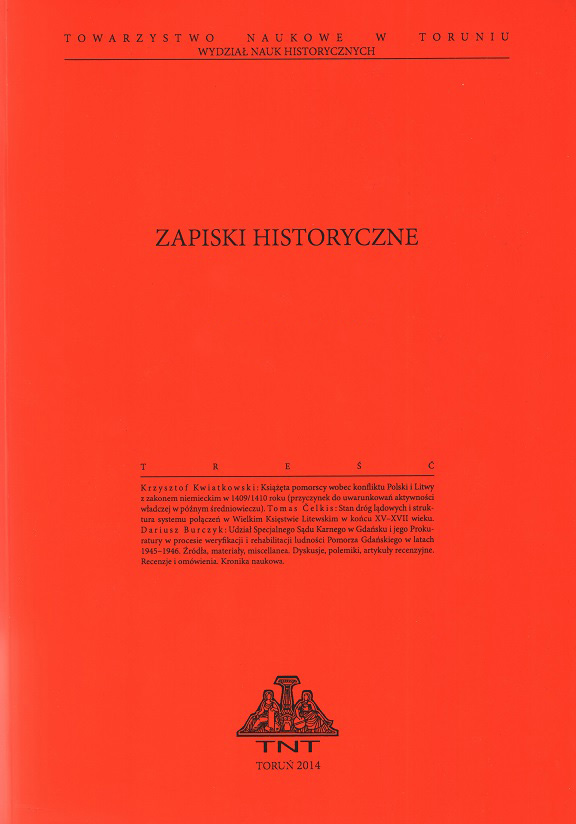(Wild)haus w Bezławkach (Bayselauken, Bäslack)
(Wild)haus in Bezławki (Bayselauken, Bäslack)
Remarks on the Construction of Fortifications of the Teutonic Order in Late Medieval Prussia
Author(s): Krzysztof KwiatkowskiSubject(s): Archaeology, Architecture, Military history, 13th to 14th Centuries, 15th Century
Published by: Towarzystwo Naukowe w Toruniu
Keywords: Late Middle Ages;Prussia;Warmia;castles;construction of fortifications;army;conflicts;
Summary/Abstract: The article constitutes a collection of remarks concerning military aspects of the construction and functioning of the Teutonic castle in Bezławki (Bayselauken, Bäslack) in the last decades of the 14th century. Speculations included in the article refer to opinions expressed by the authors of the collective monograph about the late medieval settlement complex in Bäslack published in 2013. It presents the findings of archeological research in the castle and the village in the years 2008-2012. Remarks presented in the article concern three out of six problems which are considered the most essential. While it goes beyond doubt that the castle played an important defensive role, the hypothesis of it being a “fortified camp” for the army during military actions of the Teutonic Order against the Lithuanians and Ruthenians has been undermined. It is not possible to consider it to play a military role on a significant strategic level, as do the authors of the monograph of 2013. In the second part of the article the author undermines the hypothesis about the “systematic” character of the complex of fortifications situated on the eastern Prussian border. If the castle in Bäslack was indeed part of some defensive system, it could operate on the local level and consist of an insignificant number of elements including longitudinal fortifications constituting the so called “Landwehr”. The next issue addressed by the author was a problem of the typology of the term “wildhaus”. As in the 14th century the term connoted the location of the fortification on the border of the forest, the author shows a far-reaching morphological diversity of fortifications on the eastern outskirts of the Prussian state, which were or could be classified as “wildhauses”. Thus, a “wildhaus” cannot be classified as a morphological type of a fortification. The typology of fortifications based on the morphological criteria cannot be connected with the typology based on the administrative and terminological criteria. Archeological examination of the Bäslack fortification evinces its major cognitive potential and makes us aware of how little is known about the functioning of minor fortifications in late medieval Prussia. Further research in this field belongs to one of the most important elements of historical science in the Prussian regional dimension and related branches of science.
Journal: Zapiski Historyczne
- Issue Year: 81/2016
- Issue No: 2
- Page Range: 7-46
- Page Count: 40
- Language: Polish

